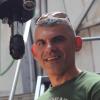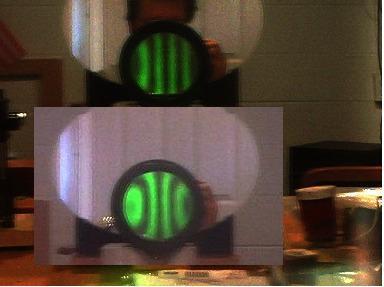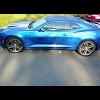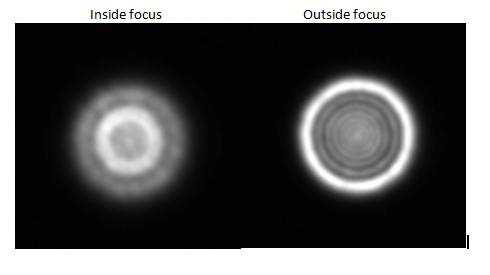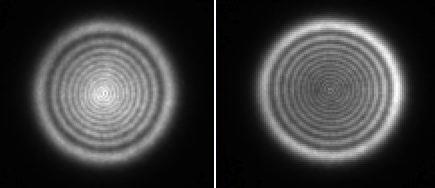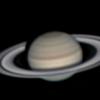
Interferometry testing
#1

Posted 22 February 2014 - 10:37 PM
--Ram
#2

Posted 22 February 2014 - 11:55 PM
#3

Posted 23 February 2014 - 08:15 AM
At delmarva steve swayze tests with his Ross null and Dick Parker has his 12.5 Autocollimator, both are null tests that don't provides numbers but will give you go-no go to 1/10~.
#4

Posted 24 February 2014 - 12:46 PM
Is there an amateur in the US who tests a telescope with an interferometer like Rohr is doing in Germany? Maybe for a reasonable price? Perhaps this is a way to quickly find out if one possesses a gem of a scope or a dud?
--Ram
Ram, you probably already have the equipment to test your scope with the Roddier test. It's straightforward, the software recently was updated to ver 3 and the cookbook has been newly rewritten. Take a look at the Yahoo Roddier group.
Tanveer.
#5

Posted 24 February 2014 - 02:53 PM
Thanks much!
I've been doing some reading on interferometry and how to interpret fringes. I will look into the Roddier test.
#6

Posted 26 February 2014 - 11:24 PM
I've had myEon 120 tested by OMI. It was done six years ago and costed under $200 including shipping. They test in the 532 nm wavelength.
Clear skies
Itz
#7

Posted 27 February 2014 - 05:01 PM
This 90% of what Rohr is doing. Now you examine the shape of the Ronchi band. If they are "jail bar" straight you have very well corrected lens in green light were most optical design for objectives are designed to be the best. If the lines bow you have a problem.
What Rohr is doing is using Bath interferometer in place of the Ronchi screen and then analysis the fringes to determine a numerical value for the wavefront. The key is that if the Ronchi band are not very close to straight, then using an interferometer is only going to tell you how bad the lens is. If the bands are very straight your going to have a very good lens and it just a matter of bragging rights as to what the exact value is.
Here is a picture of 3" f/15 Tinsley objective being test via double pass. The bottom image shows the lens has I found it in the cell. It is pretty bad from the large amount of the bowing in the lines. The top image is that same lens. Now the lines are pretty straight and it will give an excellent image. What is the difference ? The lens was backwards in it's cell and had been that way for at least 35 years !
Also the quality of the optical flat does NOT directly add to the error in the test. The flat only needs to be optically smooth but it can be many waves from flat and add little error to the test. A 100 wave "flat" only adds about 1/10 wave error to the total test. So a flat that is good to 1/2 wave and optically smooth adds so little error that won't matter.
- Dave
#8

Posted 27 February 2014 - 06:23 PM
Ronchiscreens.com sells screens for very little $.
#9

Posted 27 February 2014 - 06:37 PM
Is this a correlation between the "straightness" of these Ronchi bands and the wavefront error? Can one say that one fringe width = 1/2 wave or something like that.
Can I feed the photograph of the Ronchi band to a fringe analyzer of some sort and get a numerical value?
Doesn't the optical flat have to be pretty big, i.e. the size of the objective? I imagine that would add up to a pretty penny? How is that the optical flat doesn't add to the wavefront error?
Can I use a standard green laser like what comes with the green glatter collimator?
Is there a guide/cookbook somewhere that explains how this thing can be made to work? Some photos of a setup people are using will be very useful.
Thanks again,
--Ram
#10

Posted 27 February 2014 - 06:47 PM
And with a 3ft long refractory on a alt/az mount you can point it down to a leveled oil flat on a cement floor, so anyone can do it.
Ronchiscreens.com sells screens for very little $.
The oil flat idea is great! Saves on the purchase of an optical flat.
Some input on how to mount the Ronchi screens/collimator with respect to the optical tube will be very useful.
Or do I have to remove the lens cell from the tube?
#11

Posted 28 February 2014 - 09:52 AM
When an optical flat used for double pass isn't perfectly flat but optically SMOOTH, what you have is a spherical mirror with an extremely long focal length. The wave rating of the flat is a measure of sagitta or the depth of this extremely long sphere curve. Think of a 6" f/10 spherical mirror. If we were to measure how flat it is, it would be something like 1000th waves from flat, but if the surface is truely spherical then the wavefront reflected off it is about is 1/8 wave. So if you placed a light source at the focus of this spherical mirror it would produce nearly parallel light with 1/8 wave of error. Make the focal length longer and the wave error goes down. So when you test a telescope using a flat that isn't perfectly flat, all this does is that the telescope is seeing an object that is not at perfect infinity but the difference is so small it does make a difference. It is like doing a star test with a light source at the distance of the Moon vs a star. The math behind why this works in "Optical Shop Testing" by Malacara.
To test a refractor, all you need to do is get a plastic film container since they are 1.25" in diameter and cut a hole in the bottom. You mount the Ronchi grating in this hole and mount a LED off to one side so it is also shining thru the grating. If you have a laser collimator, put in the focuser. The beam should exit the lens in the center. If not adjust the focuser so it does. Aim the scope at the optical flat and adjust the flat or the scope so the reflected beam hit in the center of the lens. Now replace the laser with the Ronchi screen/LED. You should see many Ronchi lines. Focus until you see no more then 5 with 3 being the best. If they are dead straight you have an excellent lens.
- Dave
#12

Posted 28 February 2014 - 03:26 PM
I would love to know the answer to that question too. I searched a lot a while ago and the only lab I could find was Airylab in France.
Interesting website (Airylab) - some (or all?) of their reports on various telescope optics can be found here in this link.
For several of the scopes I had a look at, the strehl-ratios seem to test surprisingly low, even at the wavelength with the best correction...
But I'm by no means any kind of expert, and my French is not as good as I'd like it to be, so I might be totally off in my interpretations....
#13

Posted 28 February 2014 - 10:13 PM
And with a 3ft long refractory on a alt/az mount you can point it down to a leveled oil flat on a cement floor, so anyone can do it.
Ronchiscreens.com sells screens for very little $.
The oil flat idea is great! Saves on the purchase of an optical flat.
Some input on how to mount the Ronchi screens/collimator with respect to the optical tube will be very useful.
Or do I have to remove the lens cell from the tube?
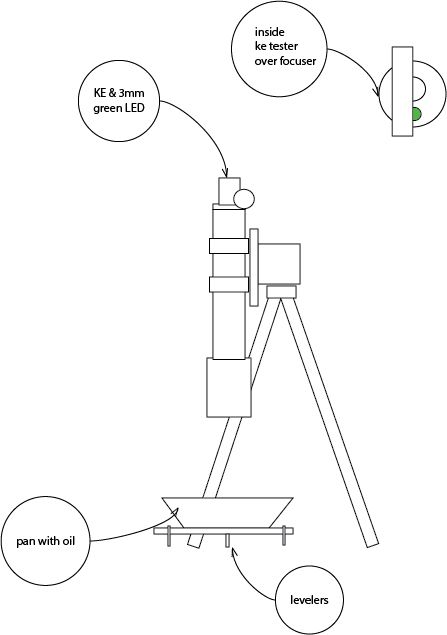
a 2in focuser cap, viewing side, 3mm led press fit into a hole drilled with a number bit, slightly smaller than 1/8".
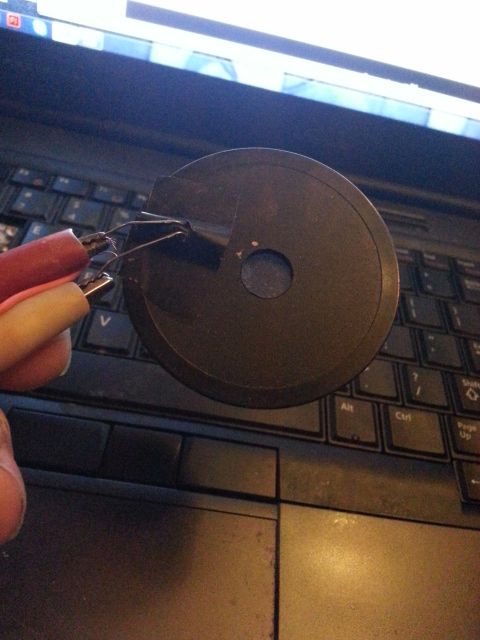
telescope side, I put a layer of wax paper over the led, under the ronchi grating.
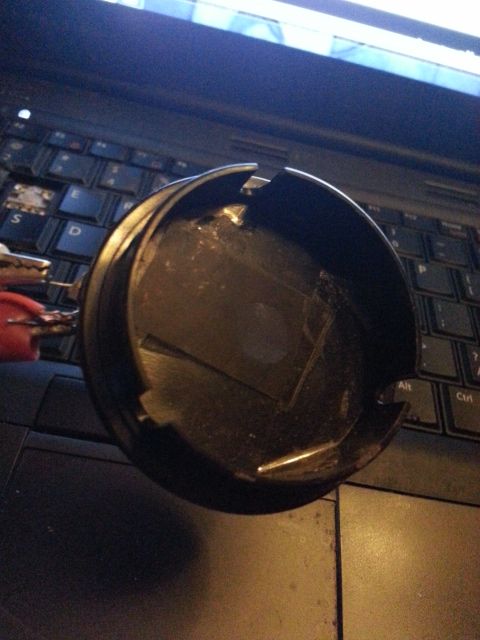
#14

Posted 01 March 2014 - 08:32 AM
Your diagram is very useful but there is one part you don't need, that is the levers on the pan of oil. The oil will alway seeks it's own level so tilting the pan would not allow you to align it. You have to do all the alignment by moving the scope so you can just place the pan of oil on the floor. - Dave
#15

Posted 01 March 2014 - 02:54 PM
#16

Posted 01 March 2014 - 04:39 PM
Do -NOT- equate a bending of Ronchi lines as equivalent to wave rating deviations !!!!!!
NO EXCEPTIONS- THINK !!!!
M.
#17

Posted 03 March 2014 - 10:48 AM
#18

Posted 03 March 2014 - 12:07 PM
dan
#19

Posted 03 March 2014 - 10:56 PM
Patrik, I thought exactly the same thing! But I am no expert either.I would love to know the answer to that question too. I searched a lot a while ago and the only lab I could find was Airylab in France.
Interesting website (Airylab) - some (or all?) of their reports on various telescope optics can be found here in this link.
For several of the scopes I had a look at, the strehl-ratios seem to test surprisingly low, even at the wavelength with the best correction...
But I'm by no means any kind of expert, and my French is not as good as I'd like it to be, so I might be totally off in my interpretations....
Andy
#20

Posted 03 March 2014 - 11:30 PM
Is this really most folks experience? Maybe we need to start a new thread on this.
#21

Posted 04 March 2014 - 12:42 AM
#22

Posted 21 March 2014 - 09:01 AM
I'm curious to hear other folks' opinion on this. Airylabs rates the TEC APO 110 FL *really* low. Its strehl ratio in the blue is incredibly low: almost like an achromat.
I owned a TEC110FL purchased from TEC and was extremely disappointed in it - both on an optical bench and under the stars. I did careful qualitative comparisons with two other highend APO's available to me - An AP Traveler, and a TMB 105/650. The TEC110FL was the worst of the three. I carefully documented my bench data including star test images, Focault images, results gleaned from using aperture masks etc. Sent the results and the Telescope back to TEC. After a few days I got an email saying "...it meets our standards".
Now, at the time I owned a really, really good TEC160FL which tested well on the bench and in the field. It was an excellent telescope that met the TEC criteria of 1/8 wave or better in green. My TEC110FL was no where near as good. I explained to Yuri that I was expecting performance of my 110FL to be on par with my 160FL. In a return email Yuri said that the 1/8 wave criteria was only for TEC's larger APO's - 140mm and above. He said that with glass melt incocnsistencies and fast F ratio that the standard for the 110's needed to be "relaxed". I was extremely disappointed and knew that from my own testing that my 110 was probably just barely better then diffraciton limited. Yuri refunded my money.
I am a big fan of TEC and have toured the facility. They are the real deal and perform most eveything in house with the exception of lens coating. I would not hesitate to purchase another TEC telescope in the future.
Start test image from my TEC110FL is below - Vega, in great seeing using a green filter. It sort of tells the story.
#24

Posted 21 March 2014 - 12:05 PM
I explained to Yuri that I was expecting performance of my 110FL to be on par with my 160FL. In a return email Yuri said that the 1/8 wave criteria was only for TEC's larger APO's - 140mm and above.
I am a big fan of TEC and have toured the facility. They are the real deal and perform most eveything in house with the exception of lens coating. I would not hesitate to purchase another TEC telescope in the future.
Hi Paul,
Do you have a star test photograph for the 160 FL? I am on the waiting list for one and want to make sure that it was a good idea to get on it :-)
Thanks,
--Ram
#25

Posted 21 March 2014 - 01:02 PM
Yes this is very bad. I have TEC 140, you can see the same test.
Can you please provide instructions for getting a set of star test images like this? I have a Canon 60D and would love to know what star, what settings, and what process is used to generate this resulting image.
Thanks!
Timm



